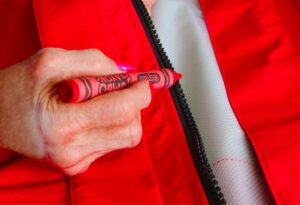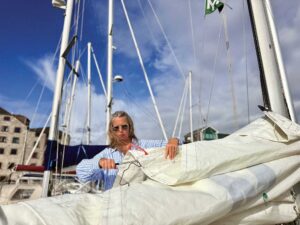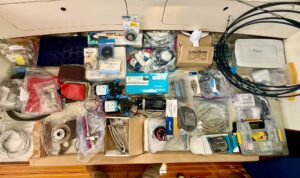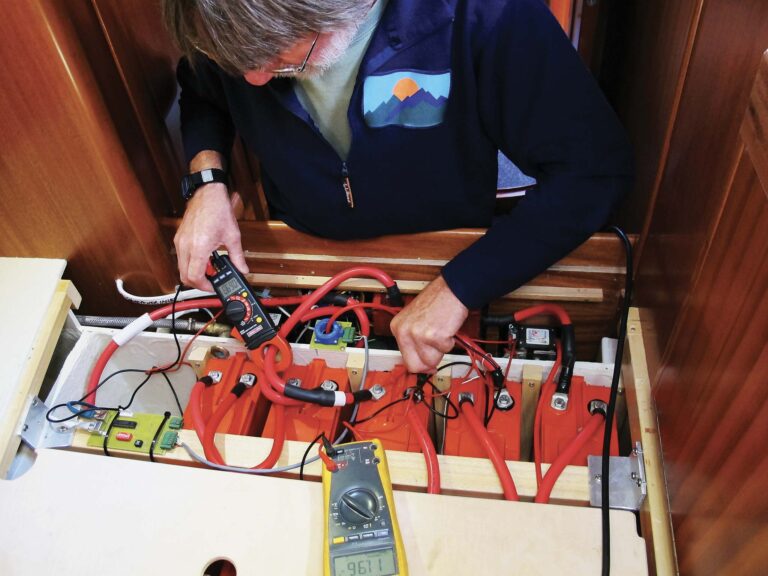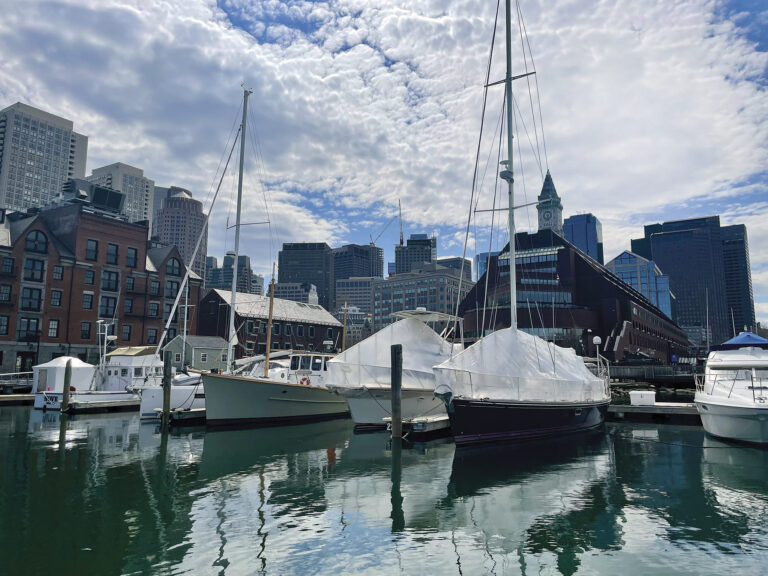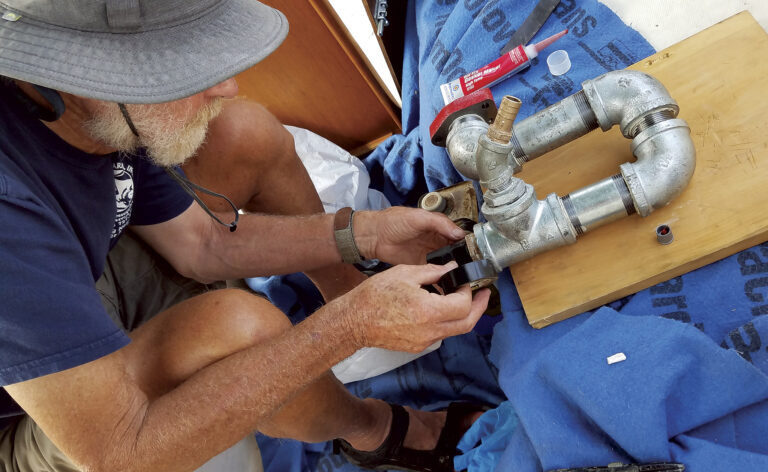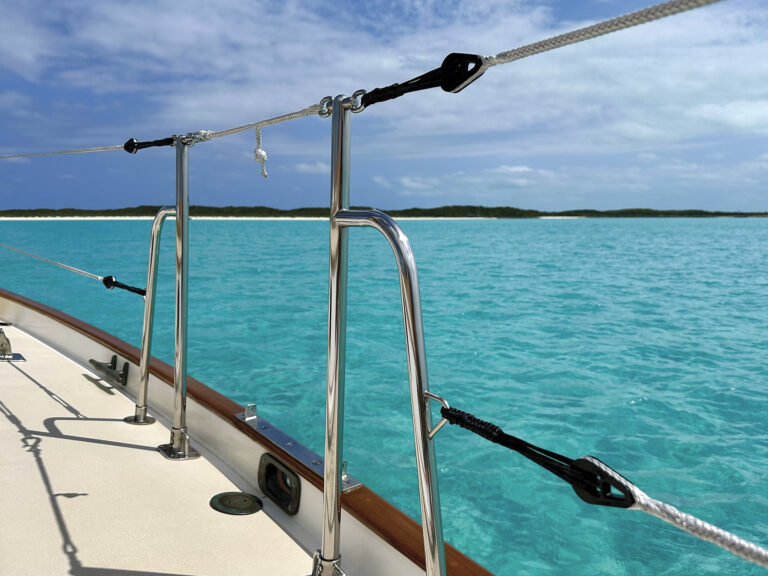The sound of shouting drew us up on deck, where we watched the crew on a nearby boat madly scurry about trying to get re-anchored. Next morning we dinghied over to ask what had happened. In response, they held up their anchor rode, at the end of which was half a swivel. These folks had apparently just learned firsthand what can happen when you install an anchor swivel backward.
Backward? If an anchored boat swings far enough when the jaw of an eye-jaw swivel is attached directly to the anchor—backward—and the anchor, for whatever reason, is unable to remain in-line with the rode, then neither will the swivel. Once this point is reached, the direction of the load on the swivel changes from a straight-line load to a side load, which is something a swivel is not designed to carry.
Granted, incidents like the one we witnessed tend to be isolated. Nevertheless, over the years we have seen enough of them to realize that far too many boaters underestimate the danger of using an under-sized swivel, a danger that increases when the swivel is subjected to side loads. Whenever a boat is anchored there is always a risk of imposing side loads on the anchor.
The best way to avoid a broken swivel is to avoid using a swivel altogether. Unfortunately, this is not always practical. There are numerous situations in which a swivel, if not absolutely necessary, is at least helpful. These include when an anchored boat is subjected to two or more cycles of reversing currents or shifting wind; when the type of anchor being used has a tendency to spin when deployed or retrieved; or when an anchor needs to be rotated while being retrieved in order to seat properly in its roller.
Fortunately, while it’s impossible to entirely eliminate the possibility of having a swivel break, by following a few rules of thumb you can greatly reduce it.
Quality: Swivels can be manufactured to any number of worldwide accepted standards. However, many are built to lesser standards or no standards at all. With the former you have some assurance as to its strength and dimensions, with the latter, not so much. If you must use a swivel of questionable pedigree, consider oversizing it.
Strength: The swivel should have a working load limit (WLL) that equals or exceeds the maximum load to which the ground tackle will be subjected. When you’re calculating the load on your ground tackle, err on the side of caution. Remember the old Maine proverb: “Nothing too strong ever broke.”
Universal movement: To avoid lateral loads on a swivel, each end of the swivel must be able to move unimpeded, up and down and side to side. The use of eye-to-eye swivels prevents a swivel from inadvertently being installed backward. Plus, the fact that shackles are needed to attach theses kind of swivels provides yet more articulation at each end. Installing a length of chain, even just a few links, between an anchor and the swivel further decreases the odds of lateral loading.
If you find yourself in a situation where a lateral load on a swivel might cause it to fail, you can:
Remove the swivel from the ground tackle.
Switch to a bigger swivel strong enough to carry a lateral load.
Deploy multiple anchors, such that each will protect the other(s) from carrying large side loads.
Other things to think about
Shackles: Anchor (bow) or chain (“D”) style shackles will break under lighter loads than they are rated for—up to half—when they are side-loaded. A shackle attached to an anchor is the component most likely to experience side loads, so you should make certain its WLL is greater than the ground tackle’s calculated maximum load.
Chain: High Test (alloy) chain, also known as Grade 43 or G4 chain, presents a challenge when attempting to mate shackles to it. The problem stems from the fact that the links are too small to accommodate the pins of a regular-strength (carbon) shackle whose WLL is equal to that of the chain’s WLL. High-strength (alloy) shackles with equal WLLs but smaller pins must be used with G4 chain, or the end link of the chain must be over-sized.
Since G4 chain has a design factor (the difference between its WLL and ultimate breaking strength, or UBS) of 3 instead of 4, as do other grades of chain, this chain has less tolerance for being overloaded. Sailors using G4 chain should consult all of the data relevant to calculating the load on the ground tackle—and they should not underestimate this data.
Finally, keep in mind that the question you should ask yourself is not whether an under-sized or improperly installed swivel has ever given you a problem, but whether it might ever become a problem in the future. Be proactive and make any necessary changes before your gear is again called into use.
Photos by RUDY SECHEZ and PETER NIELSEN
PROOF LOADS AND ULTIMATE BREAKING STRENGTHS
The “extra strength” provided by a component’s proof load (PL) and ultimate breaking strength (UBS) is not intended to handle routine loads. Instead, these are designed into an item as an emergency reserve for handling loads that could not reasonably have been anticipated. If any part of this “extra strength” is “used up” on loads that should have been anticipated, there might not be enough reserve strength to handle any additional unexpected loads.
Possibly the most significant unanticipated loads are uncushioned surge loads. These are actually shock loads, and even minor shock loads can easily double or triple the load on ground tackle. Side loads come in at a close second, although there are a whole host of other loads that can develop, usually from underestimating the strength of the wind or seas, or from other unexpected forces.
Each unanticipated load on its own, or in concert with the others, can exceed an item’s UBS. Worst of all is when one or more of these loads occur in conjunction with a side load. If an item’s WLL is questionable, the prudent thing to do is to not depend on the item’s PL or UBS, but instead to switch to a bigger item with a higher WLL.
TIPS: CALCULATING LOADS ON GROUND TACKLE
When calculating ground-tackle loads, the factors to consider are boat size, or windage, wind speed, and the boat’s degree of exposure to seas and waves. This data can be found from various sources, including the American Boat and Yacht Council (ABYC), naval architects, some boat designers, or in books such as Earl Hinz’s The Complete Book of Anchoring and Mooring.
Once you calculate the load for these three factors, consider wind gusts and the degree of freedom the boat has to oscillate.
Wind gusts: Typical gusts can exceed the sustained wind speed by 30 percent. Peak gusts can exceed the sustained wind speed by 70 percent, possibly more. Either of these can cause problems with ground tackle, so it is prudent to size your ground tackle to the highest anticipated load, not the lowest.
Oscillation: When a boat cannot swing or oscillate freely—for instance, when it’s anchored by the bow and stern—the load on the ground tackle will increase by as much as 150 percent if the wind comes on its beam.
To account for increased loads by wind gusts and the boat’s inability to oscillate, the cumulative total for the loads contributed by the boat’s size, sustained wind speed and its exposure to seas is multiplied by the applicable percentage mentioned above, then added to it.
You also need to consider strong or sustained winds, seas of long duration, currents or unanticipated loads, any of which will further increase the load on your ground tackle. To account for these, since there seems to be no simple mathematical process for determining their magnitude, we simply upgrade any item in our ground tackle by at least one size if the anticipated load calculations have reached the item’s WLL mid-range or higher.


